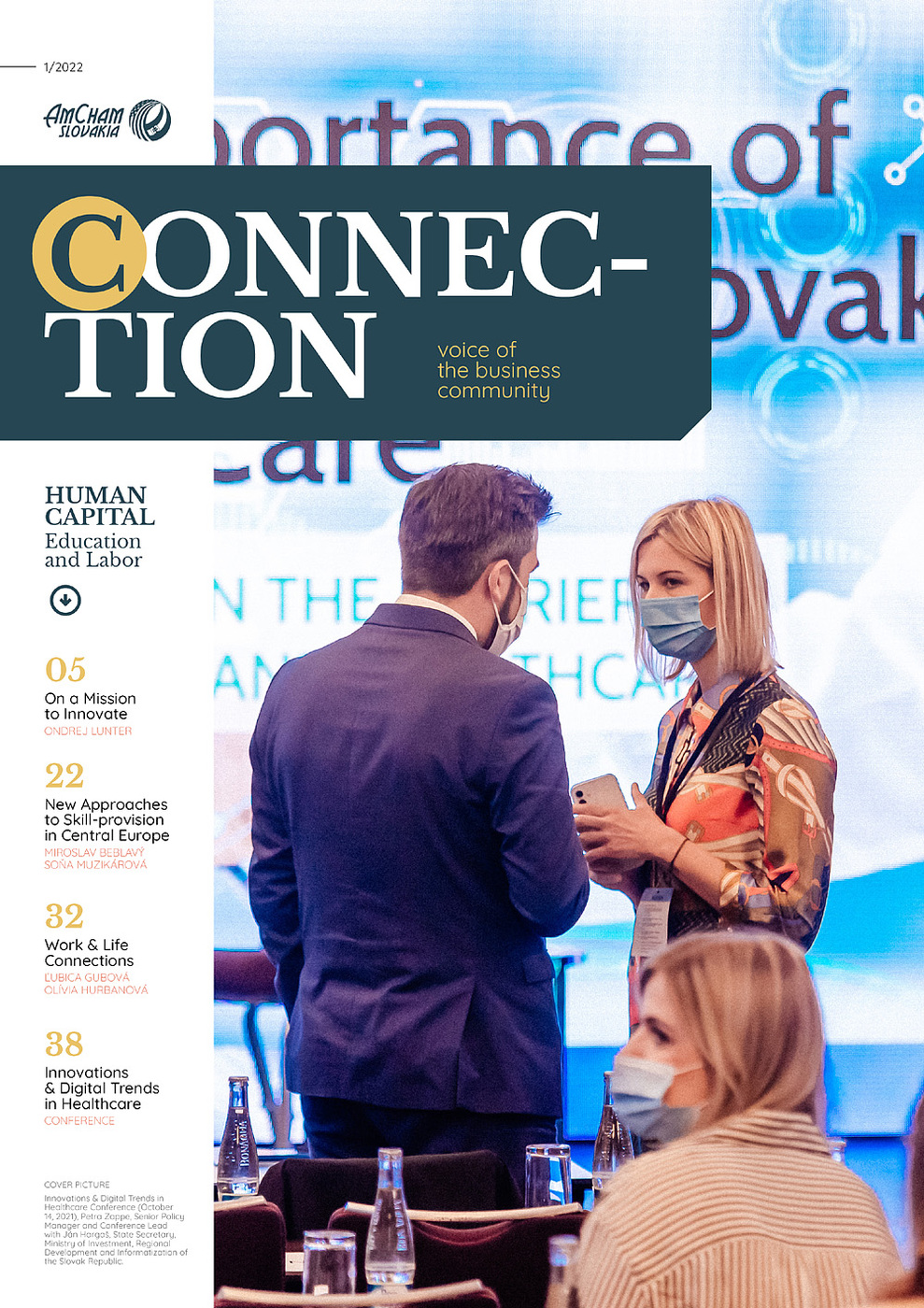The Covid-19 pandemic and the transformation impetus it creates is a unique opportunity to take a leap on the education agenda. We aim to rid “education reform” of the stigma of “impossible reform” and closely examine alternatives to a top-down skills provision.
Successes and Failures of Central European Governments’ Skills Strategy
All CEE9 countries have rolled out school system reforms during the past two decades, but only a few have succeeded in transitioning from the post-communist status quo to one that generates sustained improvements in the creation of human capital. We focus on the four economies within the CEE9 sample – namely Slovakia, Czech Republic, Hungary, and Poland – to present where they stand on educational systems’ quality and to review the institutional arrangements, government policies and reforms that may have led to their current standing.
Current State of V4 Education Systems
Divergent education outcomes resulted for these countries, despite having a shared starting point. By PISA test scores, Poland overall outperforms other countries under review (Figure 2). Initially, the Polish outcome is better only marginally for the overall score, and even inferior to other countries for scores in science and math. Over time, however, Poland clearly becomes the top performer across all disciplines. Moreover, the gap between Poland and other countries widens over time, which can be ascribed to the overall effectiveness of Polish education reforms.
 Differences between the Approaches to Educational Reforms
Differences between the Approaches to Educational Reforms
Crucial changes occurred with respect to configuring the systemic foundations ranging from pedagogy, teacher quality, education organization, governance, curricula, and financing. But both the pace, and the ways in which these changes unfolded differed across V4 and contributed to divergent outcomes.
Teaching quality
Great systems attract great teachers and prioritize teaching quality. Salaries matter but so do factors such as career advancement or individual responsibility. Top-down initiatives alone proved insufficient in achieving deep and lasting changes.. Poland grasped and reflected these principles well in its 1999 reform, which introduced voluntary teacher professional development, dispersed teacher training centers, and four-level teacher path with associated salary hikes to incentivize enrolment, with an additional option of bonuses to high-performing teachers awarded by schools. These arrangements contributed to the Polish teacher salaries ranking at the top within the V4 sub-sample, albeit still among the lowest in OECD. It is worthy to note, however, that increases in teacher salaries tend to improve education outcomes only if they are coupled with well-designed systems for selection of future teachers, their initial training and future professional development.
The other three central European countries have used different mixes of mandating and incentivizing for teacher quality, with more emphasis on the former. Typically, they view teacher certification as non-negotiable, but many training programs suffer from poor quality, formalism, and outdated methods. Importantly, the attractiveness of the teaching profession suffers of negative selection, with the most talented graduates avoiding this career path partly due to the low pay.
Organization & Funding
As centrally imposed education control was being increasingly relaxed across the region in the transition years, greater extent of decentralization appeared to correspond with better education outcomes. Poland pioneered it to a substantial degree, with streamlined municipalities being tasked with carrying out restructuring in the early post-transition years. Gradually, it became clear that decentralization interacts with capacity of municipalities, which is particularly low in Czech Republic and Slovakia due to their small average size. Additionally, Hungary promoted a high initial level of decentralization – where municipalities were entrusted with quality of instruction and development of curricula, but it backfired. The unintended adverse effect was vast between-school variation and much of the decentralization has been rolled back. Hungary became the most centralized system in V4, with Czech Republic and Poland being most decentralized of the bunch.
School Tracking & Stratification
The baseline with respect to secondary school tracking (i.e., splitting students into different academic tracks by age and/or aptitude) is that early tracking increases educational inequality and decreases student ability in some cases. Empirical findings suggest that orientation towards milder/later forms of ability-tracking may raise educational levels and increase wages.
The V4 realities are broadly in line with these predictions. Poland extended the general secondary track by one year in 1999, effectively delaying the tracking into academic, general, and vocational in secondary schools. Meanwhile, Czech and Slovak schools have hybrid systems, where there is a partial selection after the 4th grade in the German manner, but vast majority of students continue in the same school up to the 9th grade. This has been criticized by international organizations such as OECD. However, excessive focus on this issue misses the larger point. In these countries, education outcomes exhibit some of the largest between-school variation in OECD which can only partially be explained by official early tracking. A more important factor is that they practice a combination of parental school choice and freedom of schools to specialize and choose their pupils (with some limits), which lead to concentration of pupils from higher socioeconomic strata in prestige schools, as well as considerable segregation of the excluded Roma pupils even in absence of formal tracking.

Monitoring & Assessment
Data plays a formidable role in improving education outcomes. It allows for monitoring progress by leaders and calling attention where resources need to be channeled, but also holds education stakeholders accountable for raising quality. Poland implemented progress monitoring alongside reform programs by introducing national examinations at grades six, nine, and twelve, supplemented by annual students’ tests. The remaining countries have had comparatively lesser access to information on the equality of instruction over the history, with the standardized test in the form of secondary school exit exam (maturita) being the alpha-omega, later augmented by other tests, such as 9th grade primary school national standardized tests in Slovakia.
The bottom line is that no uniform policy recipe exists to facilitate sustained improvements in education quality. The V4 experience, however, which started at the same starting point in terms of education systemic setup and outcomes, and ended up in divergent education results, offers interesting insights. It has shown that countries that decentralize their organization, governance, and funding, while ensuring capacity building at all levels of government, those with quality comprehensive schools for all children, and teacher professionalization programs that grant a large degree of responsibility, but also with respect to critical facets of education, such as curricula choice, and incentivize professionalization of the teaching profession with both, financial and non-financial incentives, while properly monitoring student outcomes (Poland, to lesser extent Czech Republic), outperform more centralized systems, with more segregation, formal but lower quality teacher training, poor incentivization of teaching staff, and less frequent/institutionalized monitoring (Hungary and Slovakia).
Starting from the Bottom: The Potential of Bottom-up Skill Initiatives
Improvements in skills and education are often presumed to be the responsibility and prerogative of governments. However, large-scale government action tends to be preceded by small, frequently private initiatives that point attention to what is needed, but also possible. Given that the top-down approach to education reform frequently fails, and not just in Central Europe, bottom-up skills initiatives could be a basis for a broader action by policymakers.
Many services which are now considered essential and universally provided by the public sector were originally created from the bottom up and later taken over and consolidated by the government. In this “patchwork” model, private, mutual, or parochial organizations provide service when and where they can while there is no governmental guarantee of universal provision or access.
This can happen on a market basis, where entrepreneurs perceive an opportunity to serve unmet demand or meet it better than the public sector. A contemporary example is private for-profit education in many poorer countries. Alternatively, the bottom-up solutions can be based on ideas of self-help, community, and mutuality. Religious organizations have been frequent providers of education services throughout history.
 Grassroots education initiatives in Central Europe and beyond generally fall into one of the following categories:
Grassroots education initiatives in Central Europe and beyond generally fall into one of the following categories:
Targeting Specific Skills Gaps
Formal education system is a juggernaut that is supposed to deliver a huge variety of outputs and outcomes. Children and youth are supposed to imbibe everything from mathematical formulas to civics and appreciation of music. Parents, employers, and governments demand not just specific subject knowledge in a very long list of topics, but also a variety of skills relevant to family, labor market and citizenship. Schools are expected to instil even good habits and help with prevention of obesity and drugs. No wonder that they often fail to deliver focus and innovation in specific areas.
Bottom-up initiatives work in the opposite position. They lack the guaranteed revenue and pipeline of pupils that the formal education system enjoys, but they also have the freedom to work on just one thing and rethink it without anyone looking over their shoulder. When it works, it can provide marvelous results that the school system can utilize.
Creating Alternatives to the Formal Education Systems to Provide Broadly-based Learning Interventions
There is also potential for creating full scale alternatives to existing schools and universities.
LEAF Academy is an international boarding high school “for future leadership” based in Bratislava aimed at students 14-19 years of age. At a global scale, similar services are provided by United World Colleges (UWC), a network of boarding schools and related short-term educational programs with the mission of “making education a force to unite people, nations, and cultures for peace and a sustainable future”. It is currently composed of 18 international schools with students from over 150 countries. The prime advantage of the approach taken by these institutions is that it provides deep and wide-ranging interventions in lives of participants, frequently providing a comprehensive education experience.
Supplementing national systems by making global education content more accessible to students and learners
One of the great promises of globalization, supercharged by the internet, is the availability of the same information and digital tools to everyone around the world. The concept drives such well-known concepts as MOOCs (Massive Open Online Courses), where US-based ventures such as Coursera or EdX take the lead.
 Transforming higher education institutions to attract talent, brains, and capital
Transforming higher education institutions to attract talent, brains, and capital
After the fall of the Iron Curtain, higher education in Central Europe underwent rapid expansion, and, in a space of two decades, largely converged with student numbers in other Western countries. However, there has not been a corresponding convergence in quality. While there are individual examples of excellence, with the top tier Czech, and to a lesser extent Polish and Hungarian institutions entering global rankings, they lag behind their respective counterparts in Austria, Netherlands, or Germany. There is a number of grassroots projects using very different approaches to bypass this gridlock.
Connecting students and the world of work
Apprenticeships and vocational education modeled on Germany and Austria dominated the upper secondary education system before 1989. Even though demographic and economic changes led to a reduction of this model, it is still going strong and has been reinvigorated in recent years as governments react to demands by major employers. With hundreds of millions of euros in domestic and Structural Funds invested and millions of students across the region, this is one of the major focal points of public policy.
Preventing brain drain and stimulating brain gain
Central European countries are historically used to being sources of migration rather than destinations. However, in both of these areas, change has been afoot for several years now. For example, Vráť sa (Return) is a Slovak non-governmental initiative trying to prevent a further continuation in brain drain by showing how, through coming home, one can make an impact while not sacrificing quality of life or job opportunities. The second approach is to attract new high-powered talent – be it from other countries or return of long-term migrants.
Conclusions and Policy Roadmap: The Post-Covid Skills Reset
An inclusive economic recovery starts with economic growth, jobs, skills, and equity. But against the backdrop of the failure of many governments to adequately reform education and provide for skills of the 21st century, the potential of bottom-up approaches to education and skill provision offers a promising alternative path.
The choices made by policymakers, business leaders, and other key actors today will shape Central European societies for decades to come. At this critical juncture, leaders are to lay down the foundations consciously and pre-emptively for a new social contract to provide opportunities for all.
Key points & Recommendations for Public Policy
- Broadly-based, well-designed top-down education reforms are still any system’s best bet, as Poland and Estonia have shown. Therefore, in the quest to escape the middle-income trap, and upgrade towards innovative, intelligent, and sustainable growth paradigm, effective public skill provision should be prioritized with utmost urgency.
- In the absence or incompleteness of top-down reforms delivering tangible results – and in the face of the pressing need – successful grassroots alternatives can be extremely important for at least three reasons: (a.) they partly fill the void left by public policy; (b.) act as a complementary source of skills to the formal system; and, (c.) pilot approaches and schemes that can be adopted more broadly and improve education systems.
- The pronounced advantage of the bottom-up approaches to skills provision is that they could improve education outcomes faster. The obvious downside is that they do so typically at a small(er) initial scale. However, if policymakers devoted more attention and resources to recognition, validation and scaling of successful bottom-up initiatives, these could quickly spread, especially in smaller countries
- We recognize and appreciate that funds have been allotted toward education reforms and skills upgrades under the Recovery & Resilience Fund umbrella in all four economies under review. What is important is to use these funds not only for physical infrastructure investment projects, but also to support challenges to the status quo, including support and scaling of bottom-up initiatives.
Key points & Recommendations for the Private Sector
- The private sector should not adopt the role of a passive agent on the road towards a knowledge-based economy.
- It should allocate resources, create synergies and partnerships across sectors and industries, to help upgrade the skillset of labor, starting with areas that are closest and most relevant to its needs.
- The private sector can learn from existing success stories that can be replicated, scaled, or developed.
- Admittedly, the COVID-19 pandemic has increased the pressure on the private sector revenue and margins. In contributing to shaping the new social contract, the private sector should also be able to tap funds under the Recovery & Resilience Fund umbrella to scale-up existing bottom-up initiatives or develop them further.
This text is a shortened version of the second chapter of “GLOBSEC Tatra Summit Insight Report 2021”, published in October 2021. The full report, including the entire chapter on New Approaches to Skill-provision in Central Europe (with specific examples of successful bottom-up initiatives) can be found here: https://www.globsec.org/wp-content/uploads/2021/10/GLOBSEC-Tatra-Summit-Insight-Report-2021.pdf
Miroslav Beblavý, Visiting Lecturer at Sciences Po Paris; Scientific Coordinator at the European Expert Network on Economics of Education (EENEE)
Soňa Muzikárová, Chief Economist at GLOBSEC think-tank




Follow us